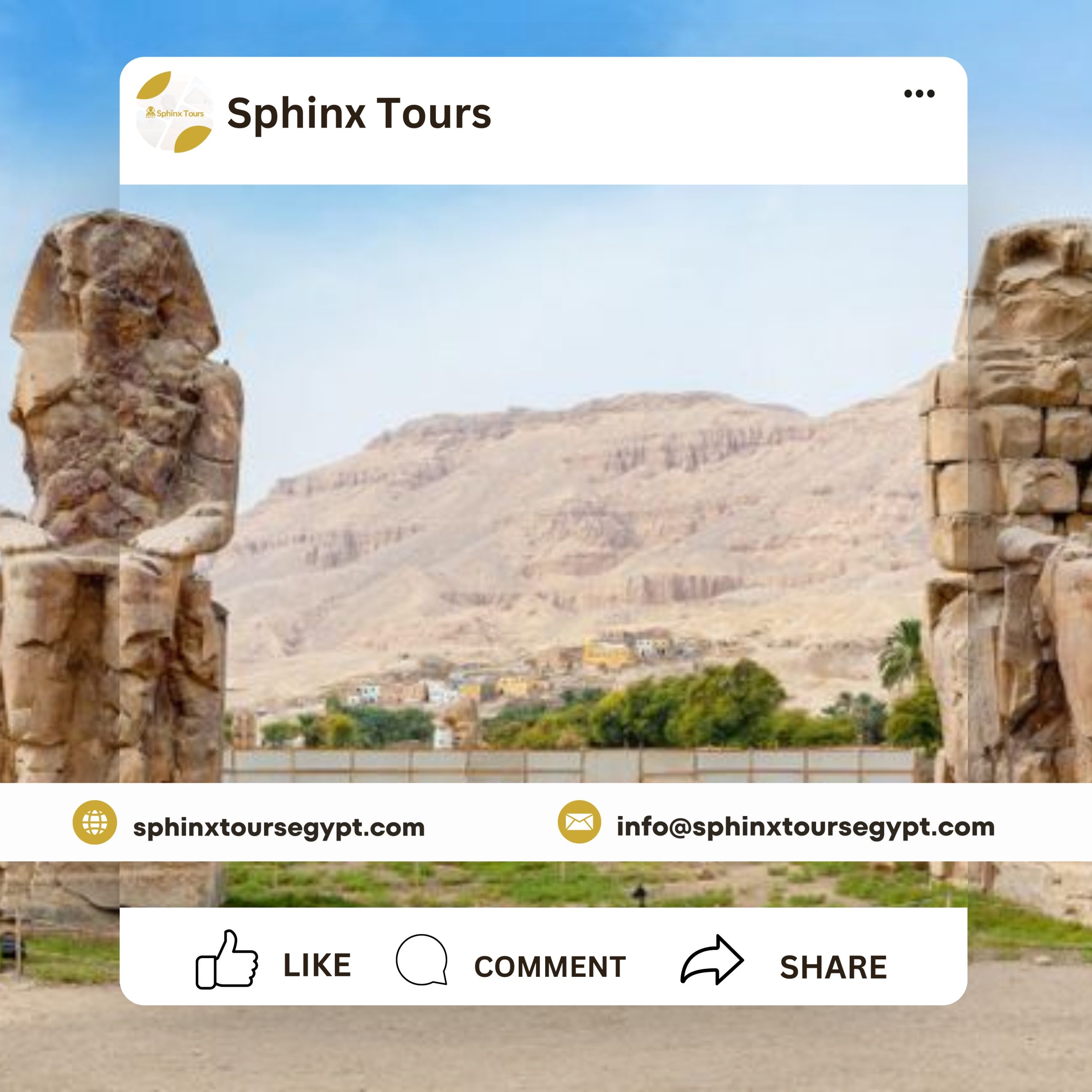Colossi of Memnon and the Temple of King Amenhotep III
The Egyptian-German archaeological mission headed by Dr. Hourig Sourouzian, during the current archaeological season, during the ongoing work on the restoration project of the Colossi of Memnon and the funerary temple of King Amenhotep III, known as the “Temple of Millions of Years” on the West Bank in Luxor, succeeded in uncovering a group of huge stones of two royal statues in the form of the Sphinx and the goddess Sekhmet, in addition to uncovering the remains of walls and columns decorated with ceremonial and ritual scenes.
This was stated by Dr. Mostafa Waziri, Secretary-General of the Supreme Council of Antiquities, explaining that among the discovered pieces are parts of two huge limestone statues of King Amenhotep III in the form of the Sphinx, wearing a nemes headdress and a royal beard, and a wide necklace around the neck, which were found in the back area of the gate of the third edifice, noting that all the pieces of these two statues have undergone meticulous cleaning, strengthening and restoration processes, which revealed the presence of an inscription in the chest area bearing the royal name of Amenhotep III, which is “Beloved of the God Amun-Ra”.
He added that the mission also found three black granite busts of the goddess Sekhmet, at the facade of the open courtyard and the Great Hypostyle Hall of the temple. These pieces will be collected with other pieces found earlier on the site in preparation for displaying them in their original places in the temple.
In addition, a number of inscriptions were discovered on a sandstone wall with scenes representing Valentine’s Day celebrations – Sed and a small black granite statue of an employee sitting perhaps next to his wife. Studies have indicated that this statue likely dates back to the post-Amarna period when restoration work continued in this temple by artists and writers.
Some column bases and stone blocks were also found in the southern half of the Great Hypostyle Hall, which indicates that this hall was larger than what is known with more columns. These pieces were moved from their discovery sites inside the temple for restoration and reassembly, where the original colors of many of them appeared in preparation for their return to their original places in the temple.
Dr. Hourig Sourouzian, head of the mission, stressed the importance of this discovery, as the discovery of two huge statues in the form of the Sphinx confirms the existence of the beginning of the processional road located between the third edifice of the temple and the courtyard of columns, where the celebrations of the Beautiful Valley Festival were held every year, as well as the celebrations of Valentine’s Day-Sed. She pointed out that the preliminary studies conducted by the mission on the two Sphinxes showed that their length is approximately 8 meters. It is worth noting that the restoration project of the Colossi of Memnon and the Temple of King Amenhotep III began in 1998 under the supervision of the Ministry of Tourism and Antiquities and the German Archaeological Institute to preserve the remains of the temple and rebuild it. The mission had previously found many huge statues of the goddess Sekhmet, King Amenhotep III and his wife, Queen Tiye. It is known that King Amenhotep III had built his funerary temple, which he called the Temple of Millions of Years, on the West Bank in Luxor, but it was destroyed as a result of a devastating earthquake that swept the country during the ancient Egyptian era.
New archaeological discoveries in the restoration project of the Colossi of Memnon and the Temple of King Amenhotep III


0 Comment